Fayaz Tepe
Fayaz Tepe, also Fayoz-Tepe, is a Buddhist archaeological site in the Central Asia region of Bactria, in the Termez oasis near the city of Termez in southern Uzbekistan.[1][2] The foundations of the site date to the 1st century CE, with a peak of activity around the 3rd and 4th centuries during the Kushan period, before experiencing a fatal decline around the 5th century CE, probably with the invasion of the Kushano-Sassanian, whose coinage can be found at the nearby site of Kara Tepe.[3][4]

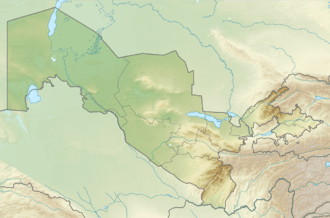
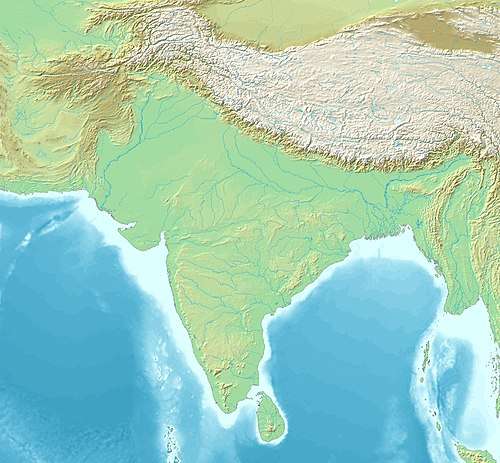
Site
The site of Fayaz Tepe is located a few hundred meters from Kara Tepe, not far from the city of Termez.
 Model of the Stupa and monastery
Model of the Stupa and monastery.jpg) Site of Fayaz Tepe
Site of Fayaz Tepe Fayaz Tepe columns
Fayaz Tepe columns Fayaz Tepe, Monastery, Court
Fayaz Tepe, Monastery, Court Fayaz Tepe, Stupa
Fayaz Tepe, Stupa Fayaz Tepe, Stupa, inside
Fayaz Tepe, Stupa, inside
Artefacts
From the site were recovered numerous Buddhist frescoes and reliefs, now mostly located in the State Museum of History of Uzbekistan in Tashkent.[1] A famous niche showing the Buddha and two monks is dated to the 3rd-4th century CE.[5][6] An inscription has been found recently, which mentions the Kushan king Huvishka.[1]
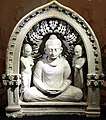


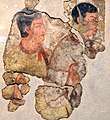 A group of courtiers
A group of courtiers Seated Buddha
Seated Buddha A devotee with horns, possibly a Kushano-Sasanian motif.[7]
A devotee with horns, possibly a Kushano-Sasanian motif.[7]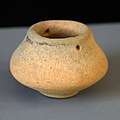 Fayaz Tepe, Miniature vessel
Fayaz Tepe, Miniature vessel Fayaz Tepe, Pottery with an Indian inscription
Fayaz Tepe, Pottery with an Indian inscription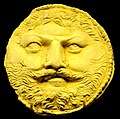 Fayaz Tepe, Sun god
Fayaz Tepe, Sun god
See also
References
| Wikimedia Commons has media related to Fayaz Tepe. |
- Lukonin, Vladimir; Ivanov, Anatoly (2012). Central Asian Art. Parkstone International. p. 62. ISBN 978-1-78042-894-9.
- Muzio, Ciro Lo. The Legacy of Gandhāra in Central Asian Painting". p. 116.
- Chatterjee, Ms Suchandana (2013). Trans Himalayan Buddhism: Re-connecting Spaces, Sharing Concerns: Re-connecting Spaces, Sharing Concerns. KW Publishers Pvt Ltd. p. 31. ISBN 978-93-85714-95-5.
- Dani, Ahmad Hasan; Litvinovskiĭ, Boris Abramovich (1999). History of Civilizations of Central Asia. Motilal Banarsidass Publ. p. 549-550. ISBN 978-81-208-1540-7.
- Rhie, Marylin M. (1999). Early Buddhist Art of China and Central Asia. BRILL. p. xi. ISBN 978-90-04-12848-4.
- Rhie, Marylin M. (1999). Early Buddhist Art of China and Central Asia. BRILL. p. 99 Figure 2.6. ISBN 978-90-04-12848-4.
- Muzio, Ciro Lo. The Legacy of Gandhāra in Central Asian Painting". p. 130, Plate 3.13.

.jpg)